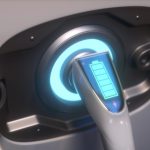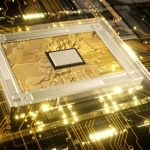In the latest issue of the International Journal of Circuit Theory and Applications, the article “A 3X and X/3 voltage conversion-based bidirectional CuK converter for supercapacitor-assisted electric vehicles” delves into the utilization of supercapacitors alongside batteries in electric vehicles. This innovative approach aims to optimize power management during acceleration and deceleration phases, thereby prolonging battery life. The study introduces a high-gain bidirectional DC-DC converter, which seamlessly integrates the varying terminal voltage of supercapacitors with the higher DC-link voltage, promising a significant enhancement in the efficiency and longevity of electric vehicle power systems.
A high-gain bidirectional DC-DC converter is the centerpiece of the study, designed to work in tandem with both a supercapacitor and a battery in electric vehicles. The supercapacitor plays a crucial role in absorbing and providing substantial power during rapid acceleration and deceleration phases, which in turn extends the lifespan of the vehicle’s primary battery. Operating modes vary between the supercapacitor, which manages specific power spikes, and the battery that sustains ongoing power delivery.
Advanced Voltage Conversion and Efficiency
The supercapacitor’s wide-ranging terminal voltage during charge and discharge cycles necessitates a converter with a high-voltage conversion ratio. This requirement is met by the proposed bidirectional DC-DC converter, which ensures a continuous and efficient power flow between the supercapacitor and the battery. Employing a CuK converter model, the system achieves a voltage gain of 3X and X/3, supporting bidirectional power transmission and reducing the need for large filter capacitance, thus further enhancing the lifespan of the supercapacitor and DC-link capacitors.
The study also highlights the converter’s inherent safety features, such as inrush current protection during the charging or discharging processes. By incorporating an inductor in these paths, the system mitigates the risk of sudden current surges, thereby safeguarding both the supercapacitor and the converter itself. Detailed steady-state analyses for both charging and discharging phases confirm the reliability and effectiveness of the proposed circuit.
Comparative Analysis and Insights
Past research on similar technologies primarily focused on unidirectional power converters or systems with less dynamic voltage ranges. These designs often fell short during rapid power demand changes, leading to reduced overall efficiency and potentially shorter battery life. The current study’s bidirectional approach offers a more holistic solution, addressing both power management and system longevity comprehensively.
Earlier methodologies also tended to rely heavily on large filter capacitors to manage current fluctuations, which often resulted in bulky and less efficient systems. The current research demonstrates that continuous current on both voltage sides significantly mitigates the need for such components, leading to a more streamlined and effective converter design. This advancement represents a significant step toward more robust and efficient electric vehicle power systems.
Overall, the proposed bidirectional DC-DC converter introduces a substantial improvement in managing the power dynamics of electric vehicles. By seamlessly integrating supercapacitors and batteries, the system ensures efficient energy use during high-demand phases, ultimately extending the life of key components. For electric vehicle manufacturers and engineers, this study provides valuable insights into developing more efficient and durable power systems. Understanding the intricacies of voltage conversion and the benefits of continuous current flow could lead to significant advancements in electric vehicle technology, reducing the reliance on extensive filtering components and enhancing overall performance.










